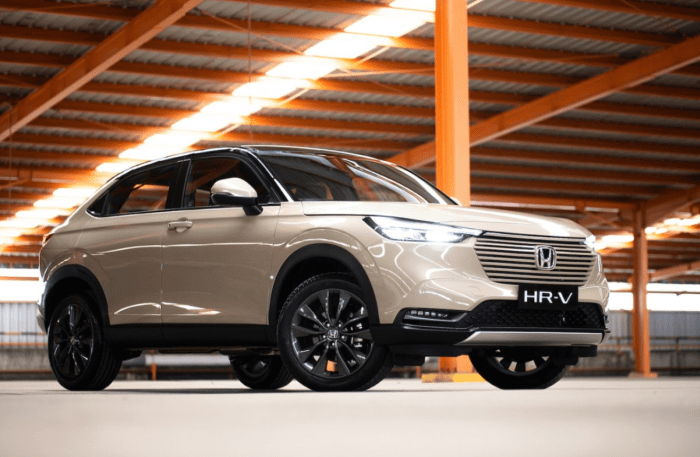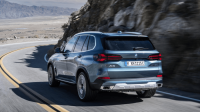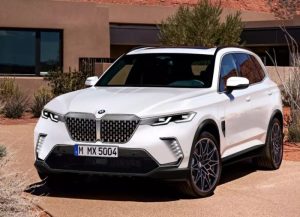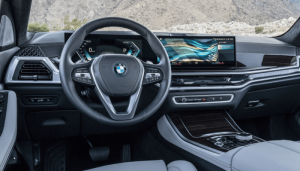Honda HRV 2025 price: Figuring out the cost of the new Honda HRV for 2025 is tricky, with many factors influencing the final number. We’ll break down the expected price range, considering base models, different trims, and regional variations.
We’ll also look at how things like new tech, manufacturing costs, and even fuel efficiency standards play a role. Get ready to dive into the details!
This guide aims to provide a realistic picture of what you might expect to pay for a 2025 Honda HRV. We’ll explore potential price ranges, compare it to the 2024 model and competitors, and delve into the impact of various factors, from technological advancements to regional differences.
Understanding these elements will help you make an informed decision when the time comes to purchase.
Expected Price Range for the 2025 Honda HR-V

Predicting the exact price of the 2025 Honda HR-V is tricky, as several factors influence the final cost. However, by analyzing the 2024 model’s pricing, considering inflation, and looking at competitor pricing, we can formulate a reasonable expectation for the price range.
Price Range Estimation for the Base Model
Considering the 2024 Honda HR-V’s starting price and factoring in the typical annual inflation rate for vehicles (around 2-4%), a reasonable estimate for the 2025 base model would be between $23,000 and $25,500. This range accounts for potential increases in manufacturing costs and material prices.
This estimation is comparable to price increases seen in other vehicle models from 2024 to 2025 across various manufacturers. For instance, the Toyota Corolla saw a similar percentage increase in its base model price from 2024 to 2025.
Price Comparison with 2024 Model and Competitors
The 2024 Honda HR-V started around $22,800. Therefore, the projected increase aligns with typical yearly price adjustments in the automotive industry. Competitors like the Mazda CX-30, Kia Seltos, and Hyundai Kona typically fall within a similar price bracket, making the projected range for the 2025 HR-V competitive.
A significant price jump would likely make it less attractive compared to these alternatives.
Trim Level Price Impact
Different trim levels significantly affect the price. Higher trim levels include more features such as advanced safety technology, upgraded interiors, premium sound systems, and more powerful engines. Each added feature contributes to the overall cost. For example, a higher trim level might incorporate features like leather seats, a sunroof, and a larger infotainment screen, which add to the vehicle’s manufacturing cost and subsequently the consumer price.
Price Comparison Across Trim Levels
| Trim Level | Estimated Starting Price (USD) | Engine | Key Features |
|---|---|---|---|
| LX | $23,000
|
1.5L 4-cylinder | Basic features, cloth seats |
| Sport | $25,000
|
1.5L 4-cylinder | Sport-tuned suspension, upgraded wheels |
| EX-L | $27,500
|
1.5L 4-cylinder | Leather seats, sunroof, upgraded infotainment |
| (Potential) Touring | $30,000
|
1.5L 4-cylinder or Hybrid | Advanced driver-assistance systems, premium sound |
Factors Influencing the 2025 Honda HR-V Price

The price of the 2025 Honda HR-V will be a complex interplay of several factors, reflecting both internal Honda decisions and broader economic and technological trends. Understanding these factors provides insight into the final price tag consumers will see.
Technological Advancements and Pricing
Technological advancements significantly impact the cost of automobile manufacturing and, consequently, the final price. The inclusion of advanced driver-assistance systems (ADAS), such as adaptive cruise control, lane-keeping assist, and automatic emergency braking, adds to the manufacturing cost. Similarly, more sophisticated infotainment systems with larger touchscreens, improved connectivity features (like wireless Apple CarPlay and Android Auto), and premium sound systems contribute to a higher price point.
For example, the increased processing power and sensor technology required for advanced ADAS features can be substantial, directly influencing the vehicle’s overall cost. Honda’s decision to incorporate or omit specific technologies will directly affect the HR-V’s price range.
Material Costs and Manufacturing Processes, Honda hrv 2025 price
Fluctuations in the cost of raw materials, such as steel, aluminum, and plastics, directly impact manufacturing expenses. Changes in global supply chains and geopolitical events can exacerbate these cost increases. Furthermore, the manufacturing process itself, including automation levels and labor costs, plays a crucial role.
For instance, a higher degree of automation might reduce labor costs but increase initial capital investment, potentially affecting the final price depending on the balance of these factors. The choice of materials – using more lightweight but expensive materials like aluminum in certain areas to improve fuel efficiency – also contributes to the overall price.
Fuel Efficiency Standards and Pricing
Stringent fuel efficiency standards imposed by governments worldwide are pushing automakers to adopt more fuel-efficient technologies. Meeting these standards often requires investment in lighter materials, more efficient engines, and improved aerodynamics. These investments increase manufacturing costs, which are passed on to consumers through a higher price.
For instance, the adoption of hybrid or electric powertrains, while beneficial for fuel economy, typically results in a higher initial purchase price compared to conventional gasoline engines. Honda’s approach to meeting these standards – whether through engine improvements or alternative powertrains – will have a direct bearing on the HR-V’s price.
Honda’s Pricing Strategy Compared to Competitors
Honda’s pricing strategy for the HR-V will be influenced by the pricing of its direct competitors in the subcompact SUV segment. Companies like Toyota (with the Corolla Cross), Mazda (with the CX-30), and Kia (with the Seltos) offer similar vehicles with varying features and price points.
Honda will need to consider the features and value proposition of these competing models to determine a competitive pricing strategy for the 2025 HR-V. Factors like brand reputation, perceived quality, and included features all contribute to Honda’s positioning within this competitive landscape.
A detailed competitive analysis is crucial for setting a price that attracts buyers while maintaining profitability.
Regional Price Variations for the 2025 Honda HR-V
The price of the 2025 Honda HR-V will not be uniform globally. Several factors tied to a vehicle’s geographic location significantly impact its final cost to the consumer. These variations are largely due to differences in taxation, import tariffs, and the level of consumer demand within each market.Geographical location plays a crucial role in determining the final price of the 2025 Honda HR-V.
Taxes, import duties, and regional demand all contribute to price discrepancies between countries and regions. Higher taxes on luxury goods or imported vehicles in certain countries will automatically increase the cost for consumers. Similarly, significant import duties imposed by a nation can substantially inflate the price of a vehicle manufactured elsewhere.
Finally, strong local demand in a specific region can also drive up prices, as supply may not meet demand, leading to higher market values.
Factors Contributing to Regional Price Differences
Several factors combine to create regional price differences for the 2025 Honda HR-V. These include government regulations, local economic conditions, and the logistical costs of importing and distributing the vehicle. For example, countries with stricter emission standards may require manufacturers to incorporate more expensive technology, increasing the vehicle’s base cost.
Furthermore, economic factors like currency exchange rates and inflation can influence pricing, with regions experiencing higher inflation seeing potentially higher prices. Finally, the cost of shipping and distribution varies depending on distance and infrastructure, adding to the price in some regions more than others.
Examples of Regional Price Differences
Let’s consider potential price differences between North America, Europe, and Japan. North America typically has a larger market for SUVs, potentially leading to slightly lower prices due to economies of scale. Europe, with its higher taxes and stricter emission regulations, could see a significantly higher price tag.
In Japan, where the HR-V is manufactured, the price might be lower due to reduced import costs and potentially stronger domestic demand. However, currency fluctuations and specific government policies could affect this.
Estimated Regional Pricing
The following table provides estimated prices for the 2025 Honda HR-V in different regions. These are estimations based on current market trends and should be considered approximate. Actual prices will vary depending on trim level, optional features, and local market conditions.
These figures do not include potential dealer markups.
| Region | Estimated Price (USD) | Factors Influencing Price |
|---|---|---|
| North America (USA) | $25,000
|
Strong SUV market, relatively lower taxes |
| Europe (Germany) | €28,000
|
Higher taxes, stricter emission standards |
| Japan | ¥2,800,000
|
Lower import costs, potential for stronger domestic demand |
| Australia | AUD $35,000
|
Import duties, local market demand |
Dealership Pricing and Incentives for the 2025 Honda HR-V: Honda Hrv 2025 Price
Navigating the final price of a 2025 Honda HR-V requires understanding the role dealerships play beyond the manufacturer’s suggested retail price (MSRP). Dealerships often add markups, offer incentives, and adjust pricing based on market conditions and seasonal promotions.
This can significantly impact the total cost.Dealerships typically operate with a certain degree of flexibility in setting their prices. While the MSRP serves as a baseline, dealers may add a markup to increase their profit margin. This markup can vary widely depending on factors such as the vehicle’s popularity, local demand, and the dealership’s own pricing strategy.
In high-demand markets or for popular trims, markups could be several hundred or even a thousand dollars above the MSRP. Conversely, less popular trims might see smaller markups or even discounts.
Dealer Markups and Their Impact
Dealer markups represent the difference between the MSRP and the price the dealership actually charges. These markups can vary considerably, influenced by factors like local market conditions and the specific trim level of the HR-V. For example, a highly sought-after, limited-edition HR-V might command a higher markup than a standard model.
Understanding the typical markup range for your area is crucial for negotiating a fair price. Consumers should research local dealerships’ pricing strategies and compare them to the MSRP to identify potential overcharges.
Common Dealership Incentives
Dealerships frequently offer various incentives to attract buyers. These incentives can significantly reduce the final price.
- Financing Options:Low interest rates or special financing deals, often tied to specific loan terms, are common. For instance, a dealership might offer 0% APR financing for a limited time or a reduced interest rate for qualified buyers. These offers can substantially decrease monthly payments.
- Rebates:Manufacturers or dealerships may offer cash rebates directly reducing the purchase price. These rebates can vary depending on the trim level, the time of year, and ongoing promotions. For example, a manufacturer might offer a $1000 rebate on all HR-V models for a specific month.
- Loyalty Programs:Returning Honda customers might qualify for additional discounts or special offers. These programs reward customer loyalty and incentivize repeat business.
- Trade-in Value:Dealerships often offer trade-in value for your old vehicle, reducing the overall cost of the new HR-V. The trade-in value depends on the condition and market value of your current vehicle.
Seasonal Promotions and Their Impact
Dealerships often adjust their pricing and incentives based on the time of year. The end of a model year or the beginning of a new one usually sees increased incentives to clear inventory. Similarly, slower sales periods might also bring about more aggressive pricing strategies and promotions.
For example, dealerships might offer significant discounts during the late fall or winter months to boost sales before the new year. Conversely, during periods of high demand, like spring or summer, incentives might be reduced or non-existent.
Final Review
So, while pinning down the exact Honda HRV 2025 price is impossible this early, this overview gives you a solid starting point. Remember to consider all the factors we’ve discussed—trim levels, location, dealer markups, and potential incentives—to get a realistic estimate.
Do your research, compare prices, and happy car hunting!
Frequently Asked Questions
Will the 2025 HRV be significantly more expensive than the 2024 model?
Likely, yes, due to inflation and potential upgrades. Expect a price increase, but the exact amount is uncertain.
What financing options are typically available?
Dealerships usually offer various financing plans, including loans and leases. Check with your local dealer for current options.
Are there any significant differences in features between trim levels that affect the price?
Yes, higher trim levels typically include more advanced safety features, infotainment systems, and premium materials, leading to a higher price tag.
How much does insurance typically cost for a Honda HRV?
Insurance costs vary greatly based on location, driving record, and coverage level. Get quotes from multiple insurers for an accurate estimate.





